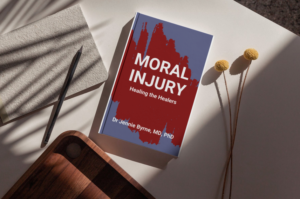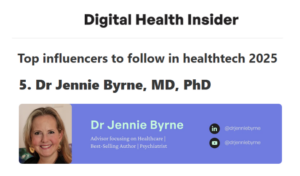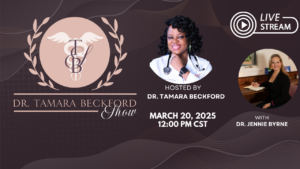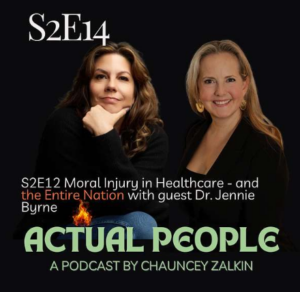The Big Picture
We are awash in “burnout”. This term has been used for almost every industry, including medicine and healthcare. This term has outstayed its welcome. We have been overusing the term burnout, rather than focusing our efforts on understanding the root problem. Healthcare clinicians are not “burned out”, they are suffering from moral injury.
Why It Matters
Talking about burnout is a good start. It acknowledges that the day-to-day existence of health care providers is simply not working. The global pandemic accelerated and highlighted the fragmented, inequitable, strained health care system in the United States.
The current system is not only bad for patients and communities, it is deeply harmful to clinicians. Unless we as a society address what is happening, we will continue to see a worsening of:
1. Early retirements – Clinicians will adjust their expectations for spending, so they can leave before age 65.
2. Leaning out – Clinicians will reduce their hours at work, especially women or others who are in caregiving roles outside the workplace.
3. Staffing shortages – Clinicians will hop from one position to another in search of better working conditions and higher pay.
4. Quiet quitting – This is perhaps the worst problem we face – our clinicians simply stop showing up mentally for their patients.
5. Redirected anger – Clinicians will direct their frustrations onto other team members or patients.
6. Self-harm – Clinicians will increase their substance use and die by suicide.
To reverse these trends we need systematic improvements in the day-to-day operational support and experience of clinicians. But operations will not fix the problem. We must acknowledge and address the deeper problem – moral injury.
Go Deeper
Moral injury occurs when:
1. A person acts, failing to prevent an action, or is witness to an act that goes against their values, AND
2. the act is ordered, condoned, or encouraged by a senior figure, AND
3. the stakes are high.
To fix moral injury:
1. We need to give voice to the problem – what is the value and how is it being transgressed by the act or action.
2. We need to give senior clinical leaders an authentic voice where they can translate the moral injury to other parts of the healthcare ecosystem, including the operations and finance teams.
3. We need to acknowledge that the stakes are high, and that having a support team can help mitigate the burden.
Stop saying “burnout”. When moral injury is happening, call it moral injury.
If the situation is more related to physical fatigue, cognitive overload, or empathy fatigue, call it by that name. Terminology like “burn-out” or “break-down” or “low energy” all come from the factory floor. Healthcare clinicians are not light bulbs. They are human beings.
We can remember that the industrial terminology like “burn-out” originated from the factory floor in the early 1900s in America. As industrial corporations exploded in the post-war era, the American corporate culture (what I call the Traditional Office) assumed industrial language. We talked about time boxes and de-risking, and efficiency. This is not how clinicians function.
Healthcare clinicians enter medicine to take care of human beings. Yes, they must learn how to function within the system of healthcare and that involves time management, tech, etc. But at their core, clinicians want to connect with and care for human beings. They do not want to feel like a robot on a factory floor.
When we say that a clinician is “burned out”, we oversimplify the situation, reinforcing the idea that they are a robot who simply needs a quick fix. The robot-clinician should have a red light flash on their forehead that says “I am burned out, fuel me up”, and go home to meditate for 30 minutes or take a warm bath. Then they could plug in a new battery pack and be good to go. Or maybe the administrator will give them a fresh battery with a new EMR template, pat them on the back, and send them back to the floor.
When we acknowledge that a clinician is suffering moral injury and validate their feeling, that is the first step. Then we must find ways to improve the system of care around them to reduce their suffering. I posit that letting robot helpers do the robot work so that the doctors can do the human work is a good framework for the issue of tech in the workplace.
We must get rid of the factory floor model of healthcare. Treat the clinicians like humans and let them do humanistic work with patients. Give clinicians a voice and leaders who know how to translate between operations and finance so that the clinical voice has a real seat at the table.
Take-Aways
1. Stop staying burn-out. Get to the root problem, if it is moral injury, then call it that.
2. Validate the clinician experience of moral injury and talk about it openly.
3. Give senior clinical leaders an authentic voice at the highest level of leadership, and give them the tools to translate the clinical voice to other systems like operations and finance.
4. Let the robots do the robot work and let the humans do the human work.
In this series I will go deeper into each this topic with examples from my experience and the that of other clinicians.







